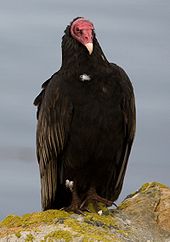Oh, gee, what to say about Swainson's Hawks? A lot of the Swainson's Hawks seen at the RMRP are immatures, and like most immature raptors, they're a little...um...doofusy. The adults, on the other hand, are truly a hawk to be reckoned with, mighty prairie predators.
.jpg) |
| John C. Avise |
Probably the coolest thing about them is their migration: these birds are the most well-traveled of us North American Raptors, flying a whopping 14,000 miles each way just to snack on grasshoppers in Argentina each winter. Personally, I don't see the allure in eating insects, but Swainson's Hawks really go nuts for them, and really only hunt other food (mice, voles, etc) during breeding season when the chicks need the nutrition.
Their migration route takes them south through the Great Plains, along the Gulf of Mexico, straight down Central America, then along the Andes to Northern Argentina. Then they hang out there for the winter months, gorging themselves on grasshoppers, speaking Spanish, and bracing themselves against the pampas winds, before turning around and flying all the way back here to breed in the spring. Then they come into the Rocky Mountain Raptor Program with an injury of some type, and they're all, "¡Che, bolodu!" and "
¡Buena onda!" Crazy, right? I guess us Great Horned Owls are homebodies in comparison.
.jpg) |
| John C. Avise |
Swainson's gather together in giant groups called kettles before flying away on migration. When the RMRP releases all the immature Swainson's Hawks they've collected over the summer, they release them into these kettles so the inexperienced kids have other birds to follow south. The Humans have reported success with this method, based on seeing which banded birds make it back north over the following years.
Here in Colorado they spend most of their time on the Plains. They build their own [poorly constructed, low-quality] nests in clusters of trees on the plains. These nests often blow down in wind storms and the like, which is the source of most of our Swainson's Hawks here at the RMRP each year. However, I can't judge their nest building skills too harshly, seeing as Great Horned Owls don't build nests at all--we steal them. Muahaha.
 |
Many years ago, back in the 1970's, the Swainson's Hawks suffered a blow to their population when farmers in Argentina began using DDT and monochrotophos as insecticides on their fields. The Hawks feasted on all the dead [poisoned] grasshoppers and locusts, and experienced a pretty big die-out as a result. But Humans in the US and Argentina worked together to stop the use of those chemicals on the fields, and the Swainson's Hawks have recovered nicely.
It just occurred to me: maybe residual effects of mass poisoning are what make the Swainson's Hawks such space cadets? But, again, even their air-headed-ness is awesome: I can't tell you how many times I've overheard a Human go into a cage to catch a Swainson's Hawk (assuming an easy catch), then comment in surprise as the bird nimbly escapes capture, or sinks a talon into someone's arm. They may be a bit goofy, but they're still definitely Raptors.
They're due to be arriving any day now, so when you see your first one of the season, take a moment to think how long they had to fly just to get back home to beautiful Colorado. Maybe congratulate them on a migration well-flown, or remind them to build their nests out of sturdier sticks this year.
Next week: Osprey!


.JPG)
.JPG)










